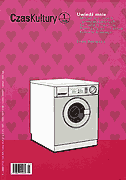
Bauhaus Furniture - A Legend Is Going To Be Viewed
Meble Bauhausu
Keywords: Bauhaus Furniture; Bauhaus Exhibition;
More...
Keywords: Bauhaus Furniture; Bauhaus Exhibition;
More...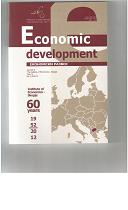
Keywords: investments; technical structure of investments; foreign direct investments; manufacturing of wood and wood products; furniture production
Investments represent a prime mover of the economy. Without them it can not talk about economic development in general of the each country. The realized investments of the Macedonian manufacturing have decrease tendency with the average annual rate (AAR) from -0,2% for the period 2007 - 2010. This trend follows the investments in the furniture production with AAR from -1,5%, unlike the manufacturing of wood and wood products where the gross fixed capital formation by purpose of investment show growth from 32,6% for the analyzed period. The investments of wood and wood products manufacturing participate with about 0,2% and also furniture production with 0,7% in the total manufacturing investments of the Republic of Macedonia for the same period. The technical structure (buildings and structures and machinery and equipment) of investments in total (manufacturing of wood and wood products and furniture production) beside fluctuation is favorable. This is the result of the average investments in buildings and structures from 32,0% and machinery and equipment with 68,0% for the period 2007 - 2010. The favorable investment technical structure is distinctive for the manufacturing of wood and wood products and furniture production too. Small participation of investment in the woodworking industry in relation to the total investment in the economy of the Republic of Macedonia and the disinvestment level of the industry as a central activity requires the investment in the sector is very small and given that no significant outcomes. Foreign investments of the Republic of Macedonia as an additional impulse for development are insignificant. Foreign direct investments by the activity of investing have variable dynamic with positive AAR for the period 2003 - 2007. The foreign investments of the manufacturing participate with only 25,0% in the total foreign investments of the Republic of Macedonia for the analyzed period.
More...
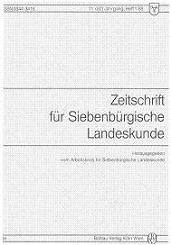
Keywords: Transylvania; Painted Furniture; Typology
Als geschichtlich und geographisch wohl begrenztes kulturelles Phänomen überrascht die Möbelmalerei in gesamteuropäischem Kontext in erster Linie durch eine relative Einheit in Typen und Ornamenten; dies als Folge eines bei allen Völkerschaften anzutreffenden Bestrebens, die praktischen und ästhetischen Bedürfnisse bei der Einrichtung eines Wohnraumes zu befriedigen, aber auch die ähnlichen Komfortansprüche, die ihrerseits auf einen ähnlichen Stand der sozialen und wirtschaftlichen Entwicklung zurückgehen. Dessen ungeachtet tritt auch auf diesem Gebiet der materiellen Volkskultur jene ethno-kulturelle Eigenart auf, die eine noch so einheitliche kunsthandwerkliche-künstlerische Erscheinung dementsprechend variiert erscheinen läßt.
More...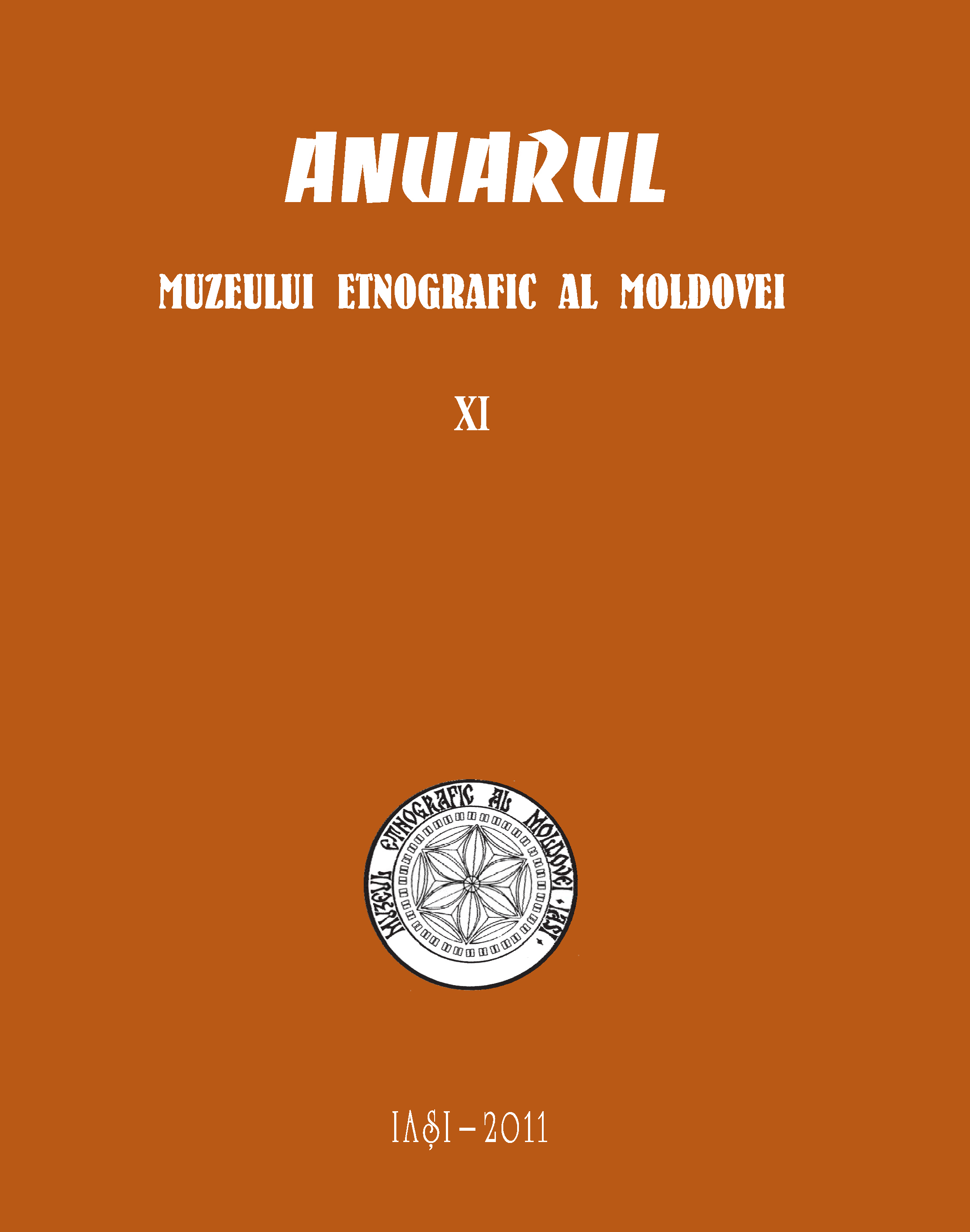
The present paper considers the museum patrimony as part of cultural heritage. It focuses on traditional furniture items in the collection of the National Museum of Ethnography and Natural History of Chisinau, from a morphological point of view: material and operating technique, diversity of shapes, evolution throughout time, decorative aspects, usage background, operating manner, significances and social role. The paper is based on the researches of the museum collection, of the specialized literature, other written sources and the results of field surveys.
More...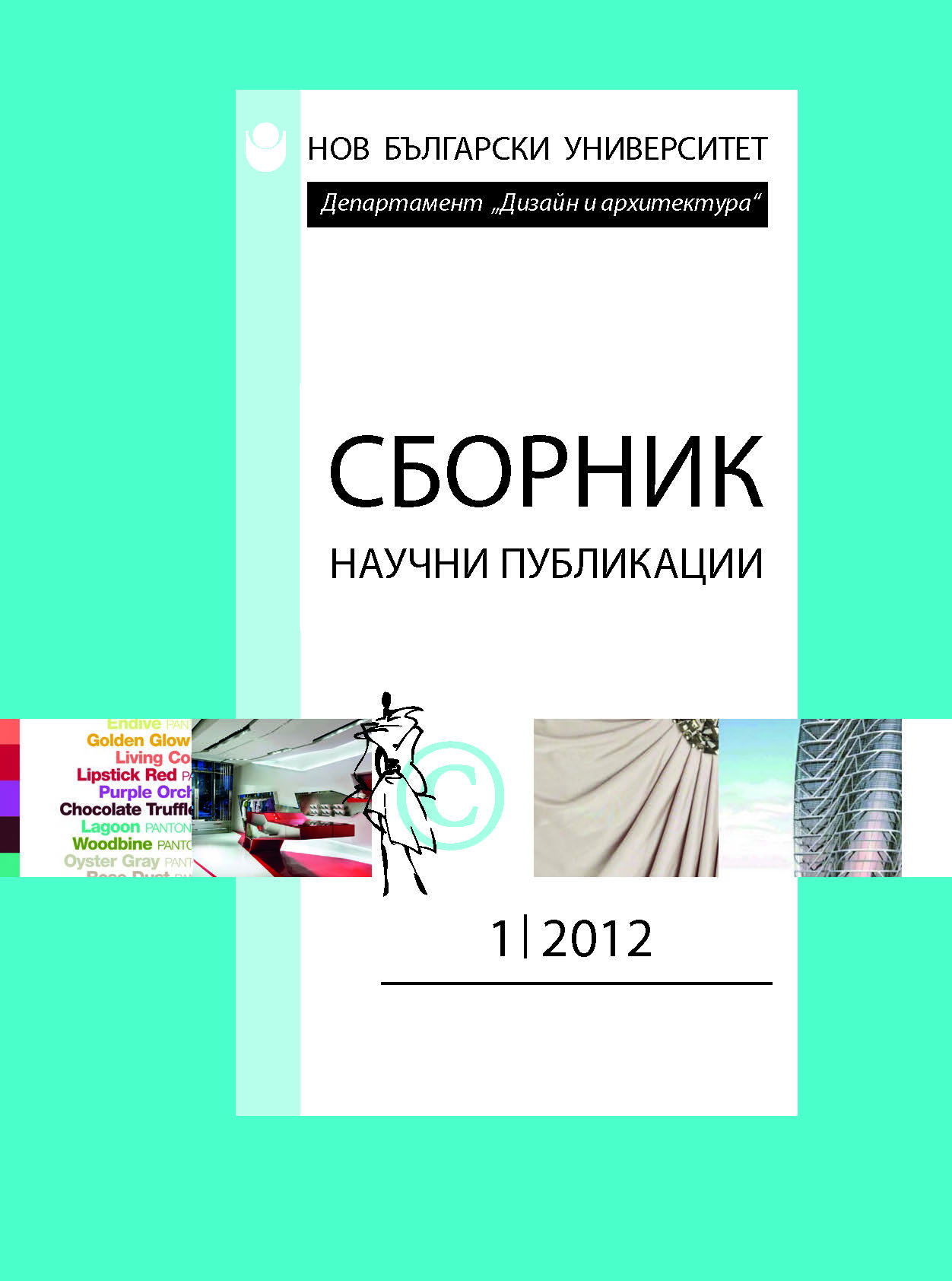
Keywords: Furniture design; Shapes; Materials texture; Interior design; Space and function;Dimensions and trends;
More...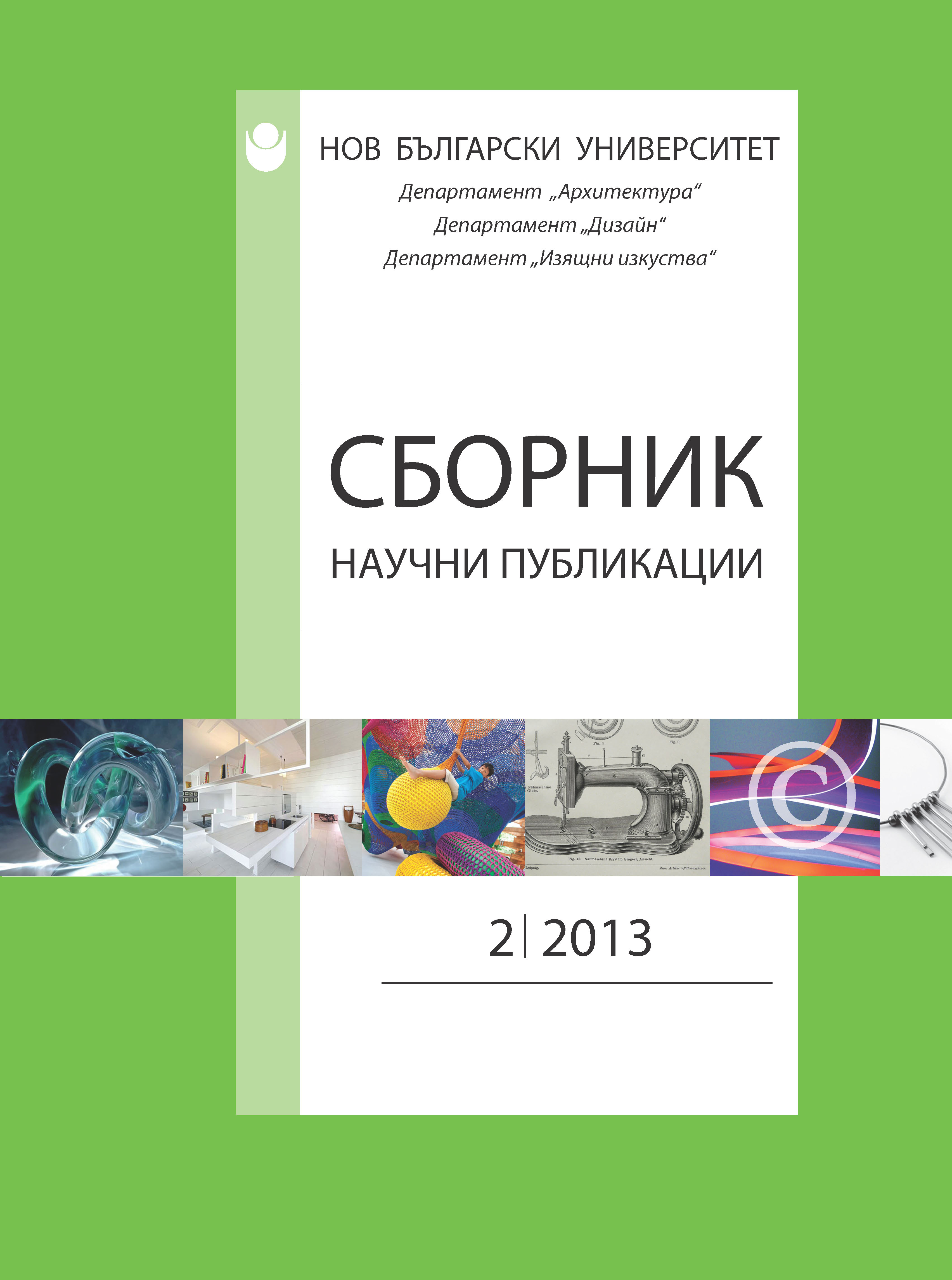
Keywords: Seating furniture; Design; Furniture in Antiquity; Interior design; Chair types
More...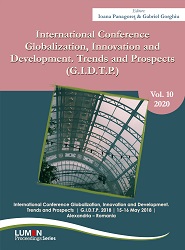
Keywords: GP Georges Perrin; method; performance; furniture industry;
In the current context of economic practice, a qualitative diversification of information is required, which draws attention to systems of calculating the performances of the economic entity. This process of continued development in the economy has produced profound mutations from the perspective of the place and role of scientific research, the word "performance" dominating the whole economy. The selection of methods and techniques with practical applicability in the furniture industry depends on the organizational character and the way the activity of the analysed entity is performed. The GP (Georges Perrin) method involves knowledge of the categories of expenditures related to the production process and involves the passing of clearly defined stages and based on the list of stages of the manufacturing process, it is determined which of the costs involved are attributable to their allocation keys and are not attributable. By applying the GP (Georges Perrin) method and going through the steps in a concrete case of an economic entity in the furniture industry, the present scientific approach seeks to highlight the advantages and disadvantages of applying the GP (Georges Perrin) method, and to study the viability of its implementation at the level of the economic entities in furniture industry.
More...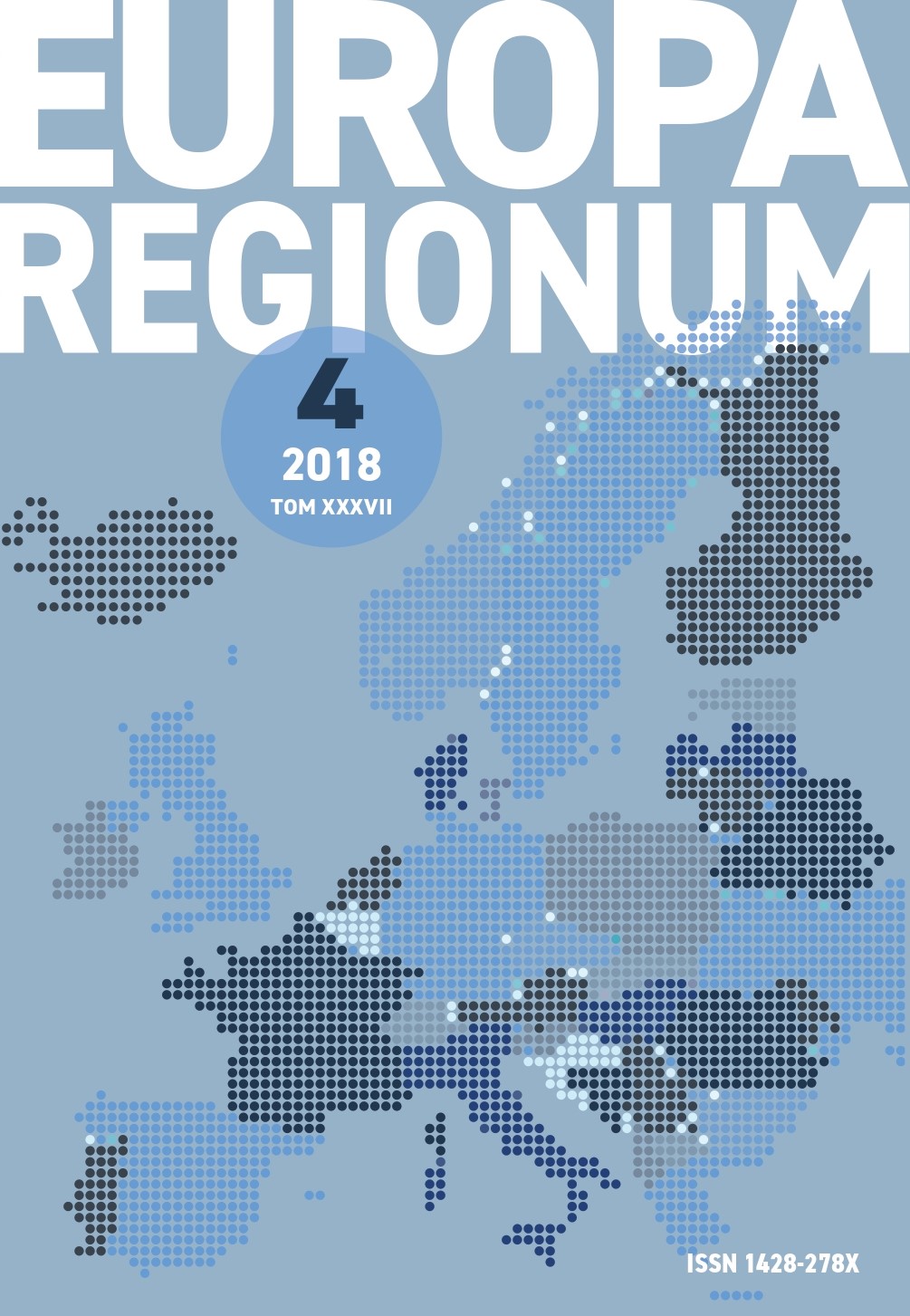
Keywords: adaptation; Kępno furniture cluster; economic crisis; Livenza furniture cluster; furniture sector
The 2008 economic crisis had a mild and temporary negative impact on the production and turnovers in the furniture sector in Poland, much more significant, negative effects were observed in Italy. Surveys among furniture firms in Kępno and Livenza furniture clusters allowed to state that relatively easier adaptation of Polish firms to the market situation during and after the crisis was connected with the fact that most domestic manufacturers take advantage of the price factor, while Italian firms did not resign from the offer customisation and exclusive design – which made their products too expensive for consumers under downturn.
More...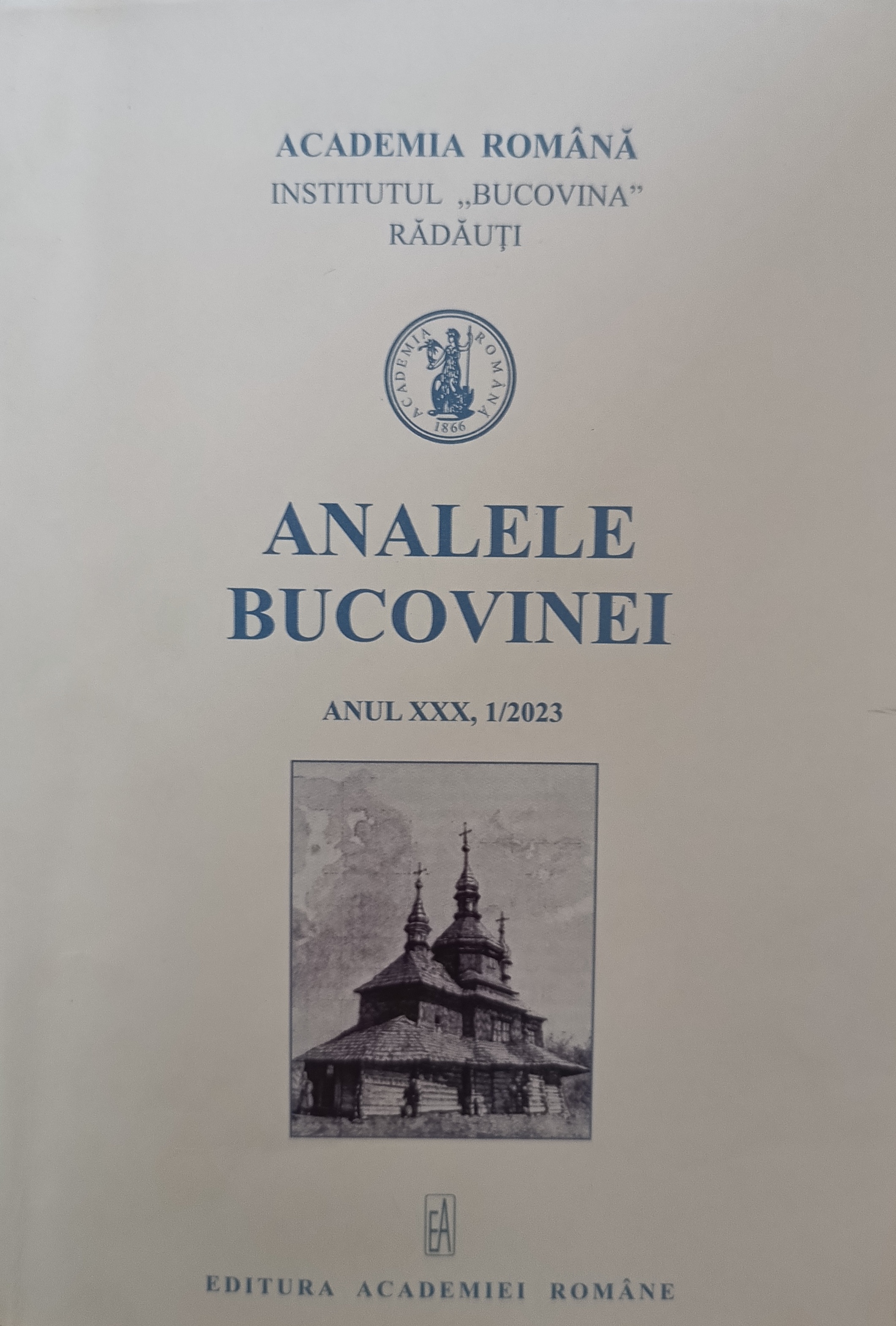
Keywords: Thöner; Rădăuți; furniture factory
A true emblem of craftsmanship regarding woodworking in Bucovina, “The IstThöner Furniture Factory of Bukovina”, as it appears written in the registration documents of the company from the year 1919, was the creation of a professional individual of German origins, Herman Thöner (13.01.1870 – 13.02.1929). After finalizing his studies in Rădăuți, he headed towards the Empire’s capital where he studied decorative painting for three years at the “Hofmuseum” (named “Kunsthistorisches Museum” in 1918), specializing in decorated furniture. He spent approximately 17 years in Vienna, having had the chance to work with the renowned furniture manufacturer Sándor Járay and holding a series of leadership positions at the “Raumkunstgesellschaft”. After finalizing his theoretical studies and having accumulated a vast practical experience, he returned to Rădăuți to establish a furniture factory in 1907. The factory was equipped with the most modern woodworking machines of the time, and the workers were recruited at the highest national and international standard of qualification. The turmoil of the First World War did not spare the city of Rădăuți, the factory being set on fire. On the 18th of March 1919, a new factory was established. The factory was named “I. Bukowinaer Möbelfabrik Thöner”, a joint stock company with an initial production capacity of 100–120 sets of furniture. The company grew exponentially, showrooms being opened in Chernivtsi and Bucharest. The quality of the furniture produced in Rădăuți spoke for itself; therefore, it was promoted by prestigious Romanian and foreign institutions, and last but not least by important political figures and magnates of the time. When Hermann Thöner passed away in the year of 1929, he left behind a blossoming business, as well as six sons who took over. Among the German Bukovinians who chose to leave the country in the autumn of 1940, in accordance to the Romanian-German deal regarding repatriation, were also the Thöner family members. The factory machines were removed and transported to Germany, which meant that in January of 1941 the Romanian authorities declared the permanent cease of furniture production. What was left of the factory was the building, which later turned into the Industrial Highschool of Rădăuți.
More...
Keywords: eco-design; recycle; pollution; architecture; sustainable;
The concept of ecodesign appeared in the late XX century, as a trend to return to the organic origins of architecture and design. The ecological house is a modern and economical housing solution that combines recycled, biodegradable and non-polluting materials with new systems and technologies to reduce the costs of heating, air conditioning and lighting. Eco-design is a whole philosophy against the depletion of natural resources and in support of ecological cleanliness and safety. The article tries to convey the message of the ecological problem in the process of training future architects and designers by applying sustainable thinking and design in professional activity, starting from the green stereotype to a practical application through technology.
More...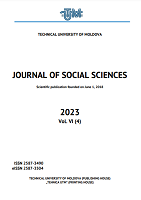
Keywords: folk art; materials; means; traditional furniture; techniques; structure;
The study focuses on the artistic aspects of traditional furniture from Bessarabia, dating from the late 19th century to the mid-20th century. We emphasize the importance of materials, decorative techniques, artistic means, and decorative structure in the crafting and decorating of traditional furniture. The motivation for this research lies in analyzing how the culture and folk art of Moldova are reflected in the characteristics of traditional furniture. The specific hypothesis of this study posits that Moldovan traditional furniture represents an expression of the talent and artistic sense of the craftsmen and householders from Moldova. The research aims to conduct a detailed analysis of the materials used, including wood and others, as well as decorative techniques such as carving, sculpture, and painting. The objectives include a comprehensive description of the mentioned materials and techniques. The research methods included documentary analysis, relevant illustrations, and extensive field research in all regions of the Republic of Moldova, spanning the years 2007-2023, contributing to the scientific and applied foundation of the research. The main results consist of highlighting the role of traditional furniture in reflecting Moldovan culture and folk art, providing data and illustrative images to support these aspects.
More...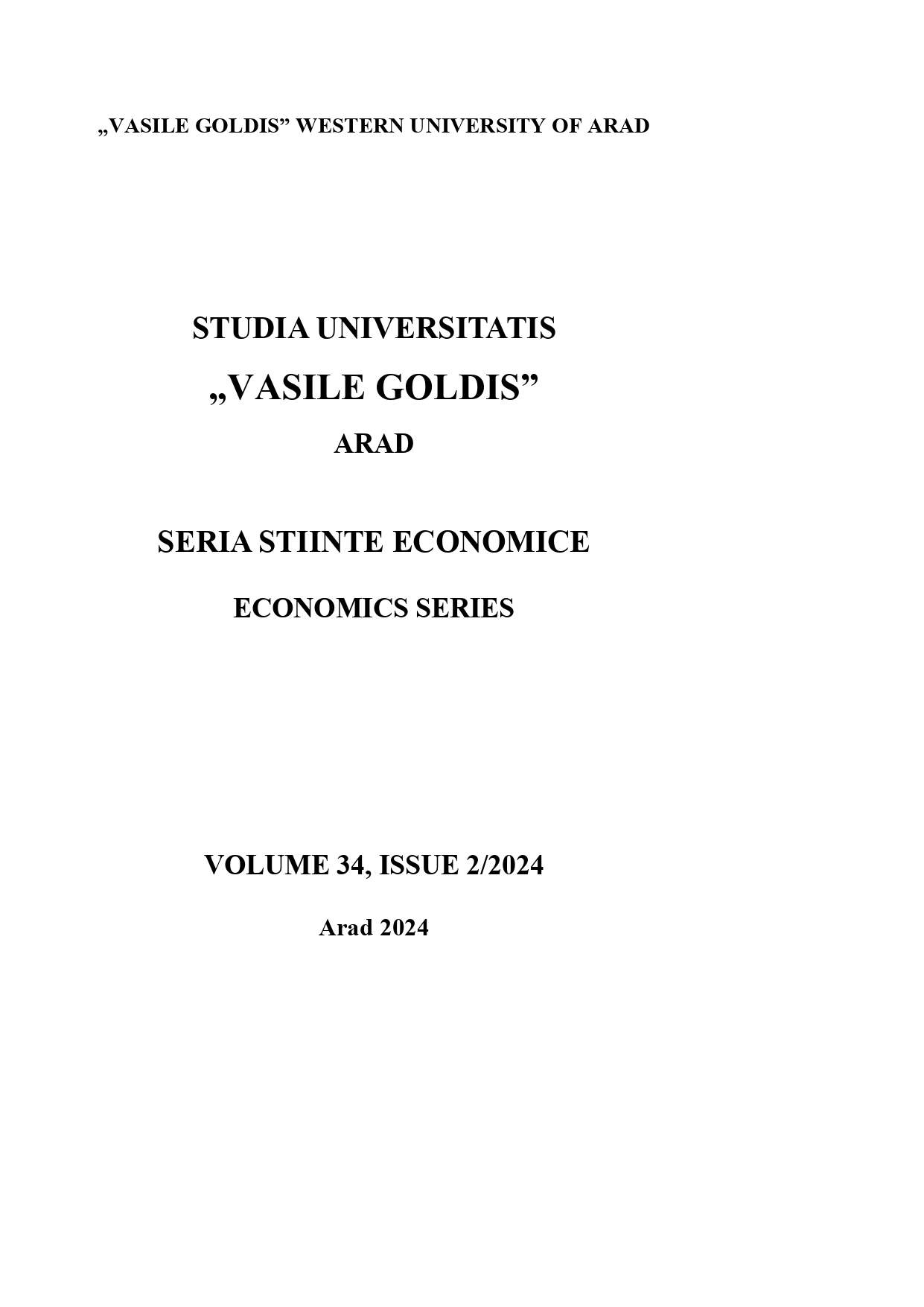
Keywords: Artificial intelligence; Recruitment of employees; organizational factors; environmental factors; technological factors; Iran's furniture industry;
The present research aims to analyze the effect of contextual factors affecting the application of artificial intelligence technology in employee recruitment in the furniture industry of Iran, which is a practical purpose and has been carried out in a descriptive-surveillance manner, to find out the reasons, facilitators and limitations of its use with the presented conceptual model. Make this technology understandable to organizations during employee recruitment. To measure and analyze the effect of these factors, a questionnaire was used as an information-gathering tool, which was given to 250 senior managers and middle managers of companies active in the furniture industry of Iran. The results of the analysis of the information obtained in two descriptive and inferential parts, according to the data analysis algorithm in the method of structural equations and Smart PLS software, confirmed the hypotheses of the research and showed that the effective background factors include: technological factors, organizational and environmental have a positive and significant effect on the use of Artificial intelligence in the furniture industry in Iran, and the use of artificial intelligence as a competitive advantage improves the organizational capabilities of recruitment and recruitment (based on data, process, staff) in the furniture industry. Forgives. Also, it makes it easier to carry out "blind" Recruitment of employees processes and review frequent applications, and by simplifying the application analysis process through applicant tracking systems, it can save time and money in human resources processes and reduce discrimination in choices.
More...Keywords: Sustainable Product; Furniture; Circular Economy; Ukraine; EU Market;
This study has been inspired by a set of new rules which are expected to be implemented within the EU’s Ecodesign for Sustainable Products Regulation (ESPR). Considering the possible market risks for the Ukrainian furniture industry, and that includes both exporters and non-exporters (within the context of the harmonisation of the rules), this research sought to capture and understand the readiness of companies as regards the changes on the EU market, along with those companies’ sentiments and ability to cope with the upcoming inherent challenges. The survey of furniture producers presented in this paper is one of the first devoted to the problem of Ukrainian producers’ adaptability to the ESPR, made all the more challenging due to the burden of the ongoing war. This study has brought to light rather positive industry sentiments regarding furniture production volume and the competitive position of companies within the furniture industry, but there is also a lack of company awareness of the full range of ESPR measures and tools, hence there is a risk of underestimating those measures and tools’ possible impact along with the risk of a delayed response. Environmental sustainability values should be given higher priority than they are currently in companies’ current marketing strategies, and the effectiveness of supply chain management practices will inevitably have to be questioned by company leaders. Possible adaptation measures aimed at circularity are not sufficiently perceived, while attention is focused more on the use of materials, energy, and environmental pollution.
More...
Keywords: Business strategy; Strategizing; Polarity management; Furniture industry; Leadership;
Purpose– This article aims to analyze the strategic work of Polish entrepreneurs in the furniture industryfollowing the political changes in 1989. The authors examined how these entrepreneurs transitioned from localcraftsmen or importers into leaders of international manufacturing companies and how their strategizingcontributed to the unprecedented growth of the Polish furniture sector.Design/methodology/approach– The authors examined extant data, specifically biographical interviewsconducted with 11 prominent leaders in the Polish furniture industry (Hryniewicki, 2015, 2018). They analyzedwithin a theoretical framework that integrates J.C. Spender’s theory of strategic management with BarryJohnson’s concept of polarity management. Polarity is a way of understanding and managing interdependent,opposing pairs of values or perspectives that give rise to conflict.Findings– The analysis reveals key patterns of strategic challenges at the level of human agency, history andsense-making. The authors identified four key polarities: life and business, knowledge presence and absence,concordance and discordance, and instrumental and non-instrumental sense-making.Originality/value– The polarity concept illuminates the interplay of agency and determinism in strategic decision-making, offering valuable insights for methodology and a deeper understanding of Poland’s furniture industry.
More...
Keywords: Guangdong Traditional Furniture; Semiotic; Cultural Symbolism; Design Innovation; Modern Application;
Based on Morris's semiotic theory, this paper systematically analyzes the symbolic features of traditional Guangdong furniture patterns and their cultural symbolism from the three dimensions of semiotics (syntax, semantics, and pragmatics). The study focuses on typical patterns such as dragon and phoenix, pine and crane, plum, orchid, bamboo and chrysanthemum in Guangdong traditional furniture, and explores their historical origins, social functions, and close links with Confucianism, family concepts, and social hierarchies in the context of Lingnan culture. By analyzing these symbols, the paper reveals their special symbolic meanings in different social classes and ritual cultures, as well as how they convey the values and lifestyles of the Guangdong region through visual forms. The study further explores the potential application of these traditional symbols in modern design, especially through simplification and abstraction, combining traditional cultural symbols with modern design concepts, materials and techniques to realize the fusion of cultural heritage and innovative design. This paper provides a new theoretical framework for the study of the patterns of traditional furniture in Guangdong, and practical suggestions for modern designers on how to effectively inherit and innovate the cultural heritage symbols, and to promote the synergistic development of cultural heritage preservation and design industry.
More...
Keywords: COVID-19; Family Business; Internal Barriers; Pandemic; Woodworking and Furniture Enterprises;
Family businesses are an important part of any economy. As in many other industries, wood-working and furniture family businesses in Slovakia face barriers that affect their sustainability and competitiveness. On the one hand, there are external barriers, or determinants, whether macro-environments (political, legal, economic, demographic, socio-cultural, technological, informational, ecological) or micro-environments, such as customers, suppliers, intermediaries, competitors and the public. On the other hand, family businesses are no less influenced by internal barriers, which include management, finance, human resources, marketing, research and development, succession, generation change. In connection with the COVID-19 pandemic, these barriers have intensified. Our goal was to examine how wood-working and furniture family businesses in Slovakia perceive the importance of internal company barriers brought about by the pandemic. The main purpose of the research is to identify significant differences in internal barriers in the segment of family woodworking and furniture enterprises in Slovakia before and during the COVID-19 pandemic. To obtain relevant results, the study surveyed 443 family enterprises operating in wood-working and furniture industries. To meet the stated goal, the methodological tool of the research method was a questionnaire survey which addressed the family wood-working and furniture enterprises. The established hypotheses were tested using statistical methods: analysis of variance, Interval estimation of relative abundance, Duncan's post-hoc test. Based on the findings obtained by collecting and evaluating the questionnaire, it was concluded that the importance of individual internal barriers in family business varies with changing conditions. In particular, property succession, generational change was ranked among the most important barriers before the pandemic. With the advent of the pandemic, however, comes a change where the importance of all barriers has increased sharply and barriers such as marketing, finance, human resource management and management are at the forefront. The results of the paper are a contribution for science and practice and open up possibilities for further research in the sector of Slovak woodworking and furniture family businesses. Considering the specifics of family businesses in this context will allow for a deeper understanding of their responses to the pandemic and contributes to the formulation of recommendations and strategies to strengthen their resilience in times of crisis.
More...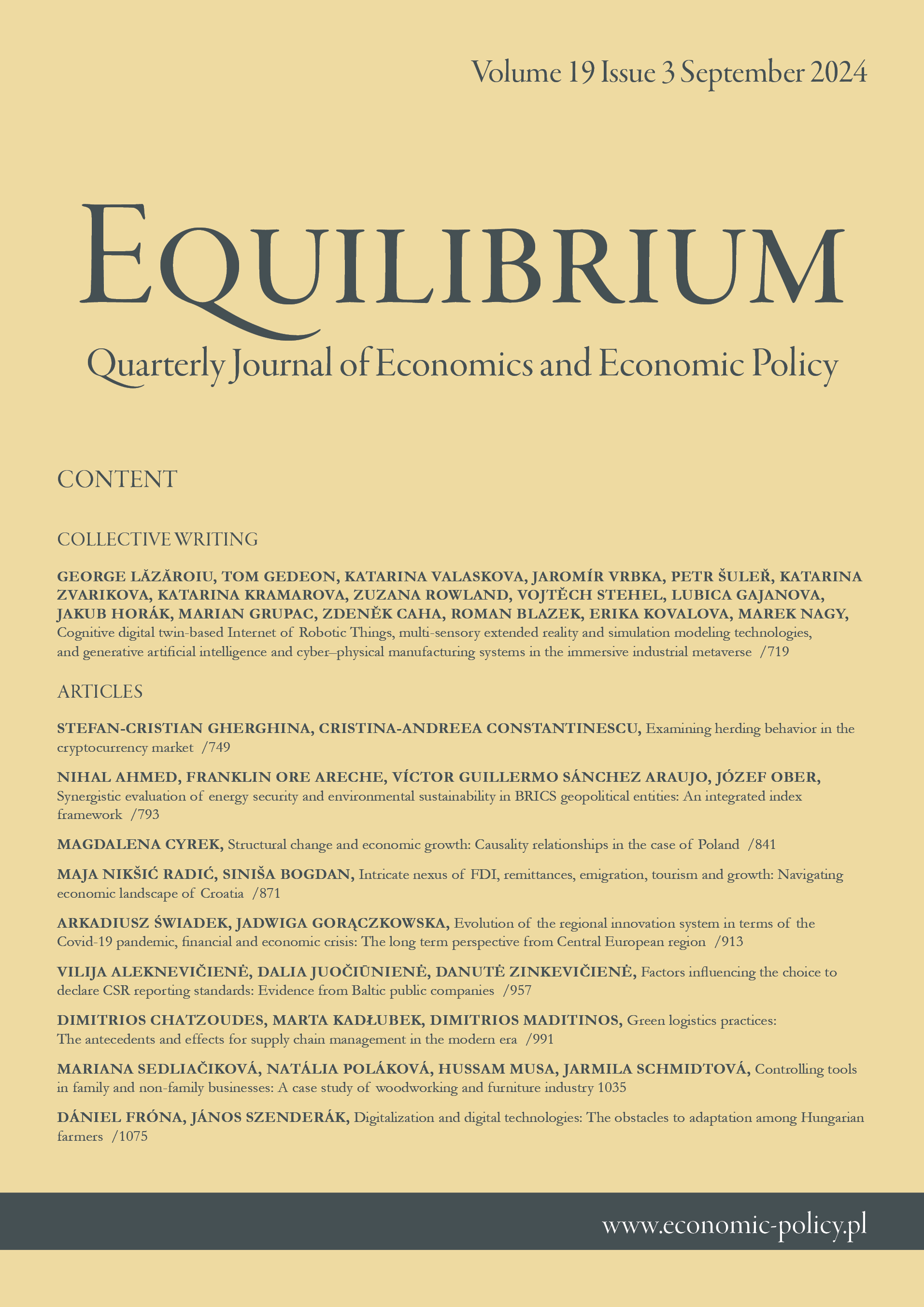
Keywords: controlling; controlling tools; family businesses; non-family businesses; woodworking and furniture industry;
Research background: Many studies point to the fact that the use of controlling in familybusinesses differs from that in non-family businesses and depends on factors that cannot be observed in non-family businesses. The research into the application of controlling tools infamily and non-family businesses operating in the woodworking and furniture industry inSlovakia as a unique interconnection of the issues of family businesses, controlling and theSlovak woodworking and furniture industry has not been so far carried out.Purpose of the article: The aim of the paper is to identify significant differences in the applica-tion of tools of individual controlling subsystems between family and non-family businessesoperating in the woodworking and furniture industry in Slovakia on the basis of a compre-hensive mapping of the utilization of controlling tools in the businesses in question.Methods: The mapping of the issue was carried out by questionnaire-based method. In total,seven hypotheses were formulated. The validity of the assumed hypotheses was verified bytwo sample z-test. To generalize the obtained results to the entire basic set, verification of theminimum sample size was carried out. The representativeness of the sample was verified bythe Pearson's Chi-square test of goodness-of-fit.Findings & value added: Based on the findings, it can be concluded that there are indeedsignificant differences in the use of controlling tools between family and non-family business-es operating in the industries in question. The results have showed the existence of significantdifferences in the use of tools of all examined controlling subsystems. It can be concluded thatthe application of controlling tools in the family businesses is significantly different from thatin the non-family businesses. It can also be observed that family businesses of the industries inquestion tend to use controlling in an insufficient way and in general to a lesser extent com-pared to non-family businesses. The main benefit of the paper is the identification of the use ofcontrolling tools in Slovak family businesses operating in the woodworking and furnitureindustry compared to non-family businesses. This knowledge can be valuable for practitionersand researchers in the field. The contribution also refers to the future direction of the devel-opment of the Slovak woodworking and furniture family businesses.
More...
Keywords: furniture promotion discourse; sustainability and furniture buying habits; perception of furniture made of NFC; Romanian customers' perception of furniture made of NFC;
The current concerns with sustainability have impacted on the value that people attach to products that are made of eco-friendly materials. Within the industrial sector, a relevant case in point regards the furniture industry. As shown by Rognoli et al. (2011), the customers’ perception of the material used in manufacturing furniture has a significant impact upon their purchase decision, which is influenced, in its turn, by subjective and cultural factors. However, while there are significant studies regarding technical aspects central to green manufacturing, relatively little emphasis has been placed on its underlying cultural determination. That is why the current article starts from the assumption that cultural positioning vis-à-vis green manufacturing should be explored in ways that complement technical studies, as it offers invaluable insights into the collective perception of emergent industrial trends and the values associated with it, as well as purchase habits, for instance. It focuses on the furniture sector in order to assess the potential Romanian customers’ preference for furniture made of Natural Fiber Composites (NFC), by considering discourse-related aspects.
More...